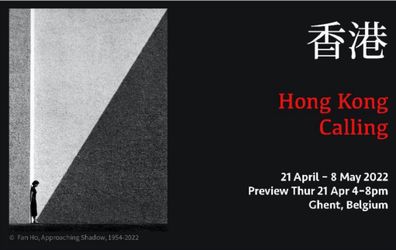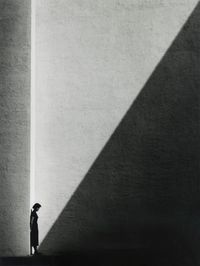
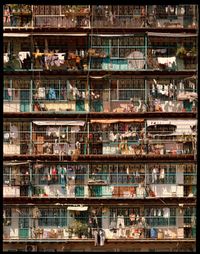
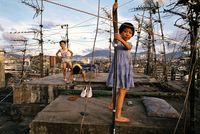
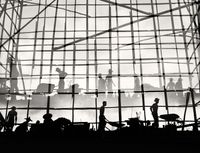
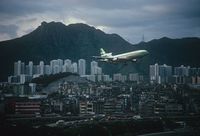
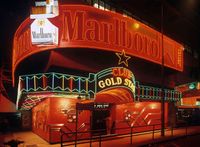
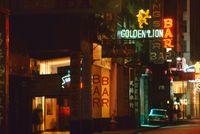
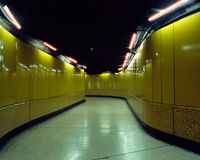
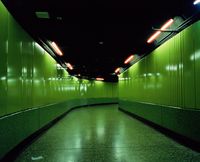
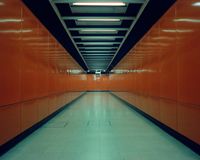
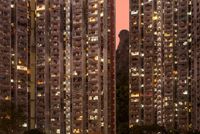
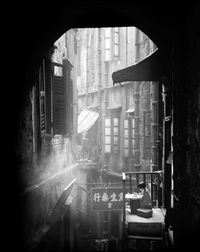
A brief history of Hong Kong since the 1950s expressed in a curated selection of photos and books by Sarah Greene, Blue Lotus Gallery Hong Kong.Selected works by Fan Ho, Greg Girard, Ian Lambot, Keith Macgregor, Christopher Button, Marcel Heijnen, KC Kwan, Tugo Cheng, Romain Jacquet-Lagrèze will be on view.
Heraclitus, a Greek philosopher, is quoted as saying: 'change is the only constant in life.' No city has seen such constant of transformations as Hong Kong.
This pop-up and ad-hoc exhibition opens with three selected works by Fan Ho. Construction speaks of a Hong Kong that is re-building after the war. Britain restores civil government in 1946 and hundreds of thousands of former residents return after the Japanese occupation. Hong Kong had another large in flux of refugees in next few years fleeing the Communist regime in China, which increased the need of housing and social infrastructure.
In the 70s, the city experiences many transformations, from rural to urban, from sea to land, from being a small colony to a rising international financial hub which was captured by Keith Macgregor, an entrepreneur, photographer, publisher, as well as a descendant from a long lineage of colonials which started with his great grandfather in Shanghai in1858.
The 80s marked a period where the city was establishing itself as the 'Asian Tiger', an international player on the world stage. Significant steps were taken, such as the Stock Exchange of Hong Kong being incorporated in 1980 culminating in creating the financial hub it is today. Rags-to-riches success stories had long been embedded in the city's DNA, but China's opening-up policies created business opportunities that turned the 'Hong Kong Dream' into a reality for many.
At night, the city was lit up by an ocean of neon signs, and large passenger jets skimmed low over Kowloon rooftops, heading into Kai Tak Airport. Bars in Wan Chai were packed with visiting sailors and business people as well as people of all genders and walks of life. All this happened under the yellow haze of a simple yet playful atmosphere, captured by Greg Girard's lens as shown in this exhibition.
In the early 90s, Ian Lambot and Greg Girard set about documenting the Kowloon Walled City, a high rise slum built on a small plot of no-mans-land without legislation and with little regard for basic services, planning and regulations. This project was bundled in the best-selling publication, 'City of Darkness'. Nearly thirty years on from the Walled City's demolition, this project offers a unique insight into the City's remarkable community, home to 40,000 people at its peak and by far the most densely populated neighbourhood the world had ever known. While the Walled City is often referenced in visual culture for its modernist dystopian aesthetic, its existence also exposes the underbelly of Hong Kong's city life.
The year 1997 was a turning point for Hong Kong as the colony was handed over back to China. The city continued, despite the original fears and uncertainty, to grow into a world class Asia City under the 'One Country, Two Systems' formula.
As the city and its inhabitants try to redefine their identity after the handover, Hong Kong visual culture thrived in the international scene and was cemented in popular culture and cinema. Creatives such as movie director Wong Kar-wai, established a distinct tone and image of Hong Kong through his films like In the Mood for Love and Chungking Express.
At the same time, Hong Kong's buildings reached for the sky as a solution to house increasing population with limited land. Romain Jacquet-Lagrèze captures this unique appeal of the city's vertical cityscape and the way of life in a city with high rises built next to mountains and natural landscape.
In recent years, Hong Kong went through another identity crisis. In the summer of 2019, a wave of protests began in Hong Kong, against a proposal to allow extradition to mainland China, which later involved violent clashes between protestors and police. In the following year, a national security law was drafted and passed, targeting acts of terrorism, subversion, secession and collusion with foreign forces.
The future of Hong Kong once again seems uncertain, with some perceiving it as being stuck in one of Hong Kong's curly long winded MTR stations as captured by Christopher Button. It seems uncertainty, just like transformation, has been the one constant in Hong Kong's story.
Sarah Greene (originally from Ghent, Belgium) curated a selection of prints and books, visualising various episodes of a place in motion. 'I have been in Hong Kong for nearly twenty years. I think my main motivation with this pop-up is to try explain the city which I love and call home in all its complexity to my family, friends and fans. Hong Kong allowed me to transform as well, from being in a corporate world to achieving my wildest dream being an independent curator and publisher. Something that I will be eternally grateful for.'
Press release courtesy Blue Lotus Gallery.
Blue Lotus Gallery pop-up viewing room
Bij Sint-Jacobs
Beverhoutplein 6
9000 Gent
Opening hours:
Thursday–Sunday: 10am–5pm
